Monday, 26th February 2024
Two Years of Russia- Ukraine War
In News: On February 24, 2022, Ukraine witnessed an invasion by Russia. Fast forward two years, and there is still no resolution to the most significant conflict in Europe since World War II.
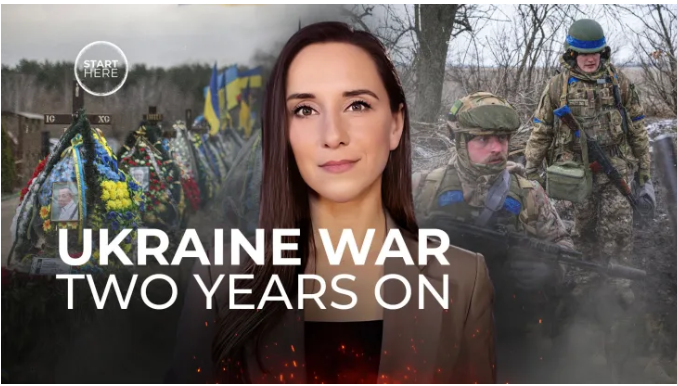
Background of the Russia-Ukraine Conflict
- Overview of Tensions
- Escalation of tensions between Ukraine and Russia in late 2013, sparked by a political and trade deal with the European Union.
- Protests in Kyiv against then-President Viktor Yanukovych's pro-Russian stance led to violence, resulting in his ousting.
- Annexation of Crimea and Separatist Movements
- Crimea Invasion (March 2014)
- Russia invaded Crimea, justifying it as defense for its interests and Russian-speaking citizens.
- Annexation followed, causing heightened concerns in the international community.
- Donetsk and Luhansk Declarations (2014)
- Pro-Russian separatists in Donetsk and Luhansk declared independence, forming the Donetsk People's Republic.
- Russia recognized the independence of these regions in February 2022.
- Minsk Peace Deal (2015)
- Signed by Kyiv and Moscow, brokered by France and Germany, aimed at ending the conflict.
- Despite the agreement, peace remained elusive, and tensions persisted.
- Crimea Invasion (March 2014)
- Russian Invasion in 2022
- Russian President Vladimir Putin declared war on Ukraine in February 2022, citing the demilitarization of Ukraine and response to perceived threats.
- Motivations for Russian Invasion
- NATO Expansion Concerns
- Russia sought a commitment from NATO to halt further expansion, particularly into former Soviet republics like Ukraine.
- Limiting NATO Presence
- Demanded NATO to stop deploying weapons and forces in Central and Eastern European countries that joined the alliance after 1997.
- Security Against NATO Missiles
- Concerns over NATO missiles in Ukraine posed a serious security threat to Russia.
- Nervousness about NATO's deepened involvement in the region.
- Autonomy for Eastern Ukraine
- Emphasis on Ukraine fulfilling obligations under the 2015 Minsk agreements.
- These agreements granted autonomy to Russian-speaking territories in the Donbas region.
- NATO Expansion Concerns
Two-Year Anniversary Summary
- As of February 24, 2024, the Russia-Ukraine war marks its two-year anniversary.
- Contrary to initial expectations, the conflict has endured, causing widespread displacement and significant global economic impacts.
Impact on Modern Warfare
- Drone Warfare Dominance
- Shift towards nimble drones as the conflict's weapon of choice, surpassing traditional tanks and planes.
- Drones provide real-time battlefield monitoring and have triggered a race in anti-drone technology.
- Bipolar World Emergence
- The war has led to a more bipolar world, prompting Sweden and Finland to join NATO, altering geopolitical dynamics.
- Challenges of Sanctions
- Despite comprehensive sanctions by the Group of Seven nations, Russia's war persisted, showcasing the limitations of sanctions.
- Supply Chain Independence Significance
- Highlighted the critical importance of domestic supply chains for countries.
- Ukraine's dependence on external support for military supplies contrasted with Russia's ability to manage its own supply chains.
Reshaping Geopolitics
- European Security Focus
- The invasion prompted European countries to prioritize security and defense concerns.
- Revitalized Europe-US Alliance
- NATO's inclusion of Sweden and Finland signifies a re-energized Europe-US security alliance.
- Arms Race and Trust Deficit
- Suspension of the New START Treaty by Russia and increased weapon supply to Ukraine contribute to a heightened arms race and trust deficit.
- Russia-China Axis Strengthens
- The conflict has led to the development of a stronger Russia-China alliance.
Concerns for Developing Nations
- Disruption in supply chains and increased prices of essential commodities impact various developing countries, exposing them to the repercussions of the war.
Source: TOI
Government Amends Electricity (Rights of Consumers) Rules
In News: Amendments to the Electricity (Rights of Consumers) Rules, 2020 have been sanctioned by the Government of India.
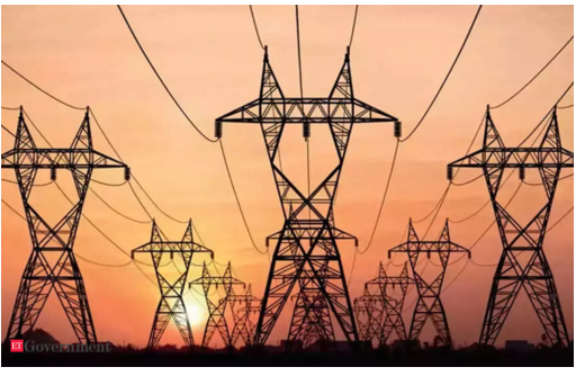
Amendments to Electricity (Rights of Consumers) Rules, 2020
- Background
- The Government of India has sanctioned revisions to the Electricity (Rights of Consumers) Rules, 2020.
- Union Minister for Power and New & Renewable Energy, Shri R. K. Singh, highlighted that the amendments aim to expedite the process of obtaining new electricity connections and enhance consumer empowerment.
- Key Amendments
- Streamlining Rooftop Solar System Installation
- Exemption from technical feasibility study for systems up to 10 kW capacity.
- Reduced timeline for feasibility study (for systems over 10 kW) from 20 days to 15 days.
- If the study isn't completed within the stipulated time, approval will be deemed granted.
- Distribution licensees' timeline for commissioning Rooftop Solar PV systems reduced from 30 days to 15 days.
- Streamlining Rooftop Solar System Installation
- Dedicated Connections for Electric Vehicle Charging Stations
- Consumers can now acquire separate electricity connections for charging Electric Vehicles (EVs).
- Aligned with the country's carbon emission reduction goals and the Net Zero target by 2070.
- Accelerated New Connections and Modifications
- Reduced time for obtaining new electricity connections in metropolitan areas from 7 days to 3 days.
- In other municipal areas, the timeline shortened from 15 days to 7 days.
- Rural areas see a reduction from 30 days to 15 days.
- Exception: In rural hilly terrain, the time frame for new or modified connections remains at 30 days.
- Enhanced Consumer Rights in Residential Complexes
- Owners in co-operative group housing societies can choose individual connections or a single-point connection for the entire premises.
- The choice will be determined through a transparent ballot conducted by the Distribution Company.
- Tariff parity introduced for consumers using a single-point connection versus individual connections.
- Mandatory Additional Meter for Complaints
- Distribution licensees mandated to install an additional meter within 5 days of receiving a complaint.
- The additional meter validates consumption for a minimum of three months, ensuring billing accuracy and consumer reassurance.
Source: PIB
Digital Public Infrastructure
In News: Nasscom and Arthur D. Little's collaborative report, titled "Digital Public Infrastructure of India - Accelerating India’s Digital Inclusion," indicates that India's Digital Public Infrastructures (DPIs) are poised to drive the country towards a USD 1 trillion digital economy by 2030.

Digital Public Infrastructures (DPIs) in India: Driving Economic Growth and Inclusion
Introduction
- Digital Public Infrastructures (DPIs) in India play a crucial role in delivering essential services, promoting digital inclusion, and empowering citizens.
- The DPI ecosystem involves digital identification, payment infrastructure, and data exchange solutions.
Key Components of the DPI Ecosystem
- Digital Identification (ID) System
- Facilitates the flow of people through a robust digital ID system.
- India has successfully implemented Aadhaar as a foundational DPI.
- Real-time Fast Payment System
- Enables the seamless flow of money through systems like Unified Payment Interface (UPI).
- UPI has become a leading platform with over 8 billion transactions per month.
- Consent-based Data Sharing System
- Manages the flow of personal information through a consent-based data sharing system.
- Built on the Data Empowerment Protection Architecture (DEPA) to give users control over their data.
IndiaStack and its Components
- IndiaStack, a set of APIs, includes
- Aadhaar: A strategic tool for social and financial inclusion.
- DigiYatra: A seamless travel experience based on Facial Recognition System.
- DigiLocker: Stores documents digitally with over 150 million users.
Report Highlights
- Economic Impact
- DPIs projected to drive India towards a USD 1 trillion digital economy by 2030.
- Expected to enhance citizens' efficiency and promote social and financial inclusion.
- Scalability and Reach
- Mature DPIs like Aadhaar and UPI have witnessed exponential adoption.
- Anticipated to scale up, reaching even the remotest segments of the population.
- Global Leadership
- India leads globally in developing DPIs, especially in digital payments and data-sharing infrastructures.
- Government support and a thriving IT ecosystem contribute to success.
- Evolution and Superior User Experience
- Existing digital entities expected to leverage new technologies for enhanced user experiences.
- Aadhaar continues to be a major contributor to India's digital infrastructure.
- Foundation for Digital Revolution
- DPIs strengthen the foundation of India's digital revolution, driving societal changes and economic growth.
- Aims for the "India@47" milestone in technology adoption.
Challenges and Recommendations
- Lack of Infrastructure Access
- Inadequate internet connectivity in rural areas poses a challenge.
- Limited access to electricity and digital hardware exacerbates the issue.
- Digital Divide
- Urban-rural disparities in digital infrastructure and services need attention.
- Bridging the digital divide is crucial for inclusive growth.
- Affordability
- The cost of internet access and digital devices can be prohibitive.
- Addressing affordability is essential for broader adoption.
- Language and Content Barriers
- Dominance of a few languages can exclude non-English speakers.
- Providing localized and relevant content is vital for accessibility.
- Accessibility for Persons with Disabilities
- Limited accessibility features in digital platforms pose challenges.
- Design considerations should prioritize inclusivity for persons with disabilities.
- Privacy and Security Concerns
- Concerns about privacy breaches and data security may hinder adoption.
- Government support, regulatory clarity, and partnerships with enterprises are essential for addressing these concerns.
|
UPSC Previous Year Questions Prelims (2018) Q. Consider the following statements:
Which of the statements given above is/are correct? (a) 1 only Ans: (d) |
Source: TH
“Xiaokang" Border Defense Villages Along the LAC in China
In News: In the latest developments along the Line of Actual Control (LAC) between India and China, Chinese citizens have commenced the occupation of previously unoccupied "Xiaokang" border defense villages.

China's "Xiaokang" Border Defense Villages Along the LAC
Model Villages Overview
- The "Xiaokang" or "well-off villages" are a key component of China's strategic infrastructure development initiative along its borders, particularly the Line of Actual Control (LAC) with India.
- Constructed in areas where territorial claims are contested, these villages serve both civilian settlement and military purposes, constituting "dual-use infrastructure."
Concerns for India
- Territorial Claims
- China's establishment of 628 such villages along India's borders raises concerns about territorial claims along the LAC, particularly in the Tibet Autonomous Region.
- Signifies a focused effort to assert dominance in disputed regions.
- Military Implications
- The potential dual-use nature of these villages raises concerns about increased militarization along the already tense LAC.
- Heightens the need for vigilance and strategic planning by Indian military forces.
- Uncertain Intentions
- Lack of transparency regarding the purpose and scale of civilian populations in these villages creates suspicion.
- Hinders trust-building efforts between India and China.
India's Border Infrastructure Initiatives
- Vibrant Villages Program
- Aims to modernize 663 border villages, with 17 selected for development along the China-India border.
- Focuses on regions like Ladakh, Himachal Pradesh, Uttarakhand, Sikkim, and Arunachal Pradesh.
- Border Roads Organization (BRO)
- Completed 90 infrastructure projects worth Rs 2,941 crore along the India–China border.
- Projects include the Trans-Arunachal Highway, Frontier Highway, and East-West Industrial Corridor Highway.
- Border Area Development Programme (BADP)
- Centrally sponsored scheme addressing developmental needs in remote areas near the international border.
- Funds used for infrastructure, livelihood, education, health, agriculture, and allied sectors.
- Railways
- Indian Railways constructing strategic rail lines in the Northeast for swift mobilization of the Indian army.
Understanding the Line of Actual Control (LAC)
- LAC Overview
- Serves as the boundary separating Indian-controlled territory from Chinese-controlled territory.
- India asserts a length of 3,488 km, while China contends approximately 2,000 km.
- Disagreements Surrounding the LAC
- Primary disputes arise from differing alignments in the Eastern, Middle, and Western sectors.
- Lack of clarity and historical disagreements contribute to ongoing tensions.
- India's Response to LAC Designation
- Initially rejected the concept in 1959 and 1962, citing concerns over vague definition and potential exploitation by China.
- Shifted approach in the mid-1980s, formally accepting the LAC concept in 1993.
- LAC vs Line of Control with Pakistan
- The Line of Control (LoC) has international legal validity, established in 1972 after the Kashmir War.
- In contrast, the LAC is not agreed upon by both countries and lacks formal delineation on a map or on the ground.
|
UPSC Previous Year Questions Prelims (2020) Q. Siachen Glacier is situated to the (a) East of Aksai Chin Mains (2016) Q. Border management is a complex task due to difficult terrain and hostile relations with some countries. Elucidate the challenges and strategies for effective border management. |
Source: IE
Tirupati's Swachh Triumph
In News: The Ministry of Housing & Urban Affairs recently recognized Tirupati Municipal Corporation (MC), Andhra Pradesh, for its remarkable accomplishments in waste management and sanitation.
Achievements in Waste Management and Sanitation in Tirupati
- Swachh Survekshan 2023 Ranking
- Secured the 8th spot among cleanest cities with a population of over 1 lakh.
- Garbage Free City (GFC) and Water Plus Rating
- Attained a 5-star Garbage Free City (GFC) and Water Plus(+) rating.
- Waste Generation Statistics
- Generates approximately 115 tonnes per day (TPD) of Wet Waste, 15 TPD of Food Waste, 61 TPD of Dry Waste & Recyclables, 1 TPD of Domestic Hazardous Waste, and 2 TPD of Plastic Waste.
- Additional 25 Tons per day of Construction and Demolition waste.
- Robust Waste Collection Infrastructure
- Achieves 100% door-to-door waste collection covering every gate in the city.
- Provides essential infrastructure such as Ghanta Gaddis and auto tippers for segregated waste collection.
- Technology Integration for Efficiency
- Utilizes an Online Waste Management System (OWMS) with RFID technology for real-time tracking.
- Ensures accountability and efficiency in door-to-door waste collection.
- Waste Processing and Management Facilities
- Focuses on decentralized waste processing to reduce transportation costs.
- Identifies and classifies bulk waste generators for streamlined waste management.
- Plastic Waste Management Initiatives
- Manages plastic waste at a dedicated facility efficiently.
- Introduces a Washing Plant and Agglomerator Machine for effective plastic waste recycling.
- Organic Waste Management
- Operates a Bio-methanation Plant converting organic waste into bio-methane gas and quality compost.
- Utilizes generated bio-gas for cooking, energy, and vehicle fuel, contributing to energy sustainability.
- Construction and Demolition(C&D) Waste Management
- Partners with Pro Enviro Solutions for a facility managing 20-25 TPD of C&D waste.
- Utilizes processed materials for manufacturing and developmental works, promoting circular economy principles.
|
UPSC Previous Year Questions Prelims (2019) Q. As per the Solid Waste Management Rules, 2016 in India, which one of the following statements is correct? (a) Waste generator has to segregate waste into five categories. (b) The Rules are applicable to notified urban local bodies, notified towns and all industrial townships only. (c) The Rules provide for exact and elaborate criteria for the identification of sites for landfills and waste processing facilities. (d) It is mandatory on the part of the waste generator that the waste generated in one district cannot be moved to another district. Ans: (c) Mains (2018) Q.1 What are the impediments in disposing of the huge quantities of discarded solid waste which are continuously being generated? How do we safely remove the toxic wastes that have been accumulating in our habitable environment? Mains (2017) Q.2 “To ensure effective implementation of policies addressing the water, sanitation and hygiene needs the identification of the beneficiary segments is to be synchronized with anticipated outcomes.” Examine the statement in the context of the WASH scheme. |
Source: PIB
iMPEL-AI Program to Empower India’s AI Innovators
In News: Microsoft and iCreate recently formalized their collaboration through a Memorandum of Understanding (MoU) facilitated by the Ministry of Electronics & IT to promote the growth of AI startups in India.
Key Highlights of iMPEL-AI Initiative by Microsoft and iCreate
- The iMPEL-AI (iCreate-Microsoft programme for Emerging Leaders in Artificial Intelligence) initiative was launched.
- The program aims to identify and recognize 1100 AI innovators across India to become AI Most Valuable Players (MVPs).
- The focus areas of the program include Healthcare, Financial Inclusion, Sustainability, Education, Agriculture, and Smart Cities.
- Microsoft and iCreate will offer AI skilling opportunities to 11,000 innovators, startups, and young individuals through Microsoft’s Learning Management System.
- Participants completing the program will receive globally recognized certifications from Microsoft, enhancing their employability and career prospects.
- The initiative will also select and support the scaling of 100 startups using Azure OpenAI, with the top 25 receiving go-to-market support from Microsoft’s Global Network.
Source: PIB
Virtual Private Network (VPN)
In News: The Mumbai police arrested a 21-year-old from Gujarat who allegedly sent five threatening emails to industrialists. The suspect had used a Virtual Private Network (VPN) to mask his IP address.
Understanding Virtual Private Network (VPN)
- Definition: A VPN, or virtual private network, establishes a digital connection between your computer and a remote server provided by a VPN service.
- Digital Connection: It creates a point-to-point tunnel that encrypts personal data, masks your IP address, and allows you to bypass website blocks and firewalls on the internet.
- Key Characteristics
- Virtual: No physical cables are involved in the connection process.
- Private: The connection ensures privacy by encrypting data, making your browsing activity and personal information inaccessible to others.
- Networked: Multiple devices, namely your computer and the VPN server, collaborate to maintain the established secure link.
Advantages of VPN
- Data Security
- A VPN connection encrypts data, rendering it unreadable to unauthorized parties.
- Browsing activity is hidden, ensuring privacy and protection against potential threats.
- Bypassing Censorship and Surveillance
- VPNs enable users to overcome regional restrictions, censorship, or surveillance imposed by governments.
- Location spoofing allows users to access blocked websites and services, providing online freedom.
- Preventing ISP and Third-Party Tracking
- ISPs often track browsing history through the device's IP address. VPNs mask your IP address by routing traffic through a remote server, preventing ISP tracking.
- Personal data remains private, reducing the risk of third-party tracking and ensuring a more secure online experience.
Source: IE
Purple Frog
In News: The Tamil Nadu government recently instituted the Tamil Nadu Endangered Species Conservation Fund (TNESCF) with the aim of safeguarding the purple frog and other lesser-known endangered species.
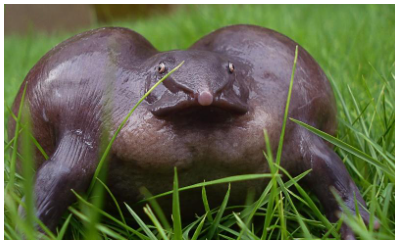
Purple Frog: The Maveli Frog or Pignose Frog
- Introduction
- Also known as Maveli frog or Pignose Frog.
- Believed to have co-existed with dinosaurs and shares similarities with the Sooglossidae family of frogs in Seychelles.
- Often referred to as a 'living fossil,' belonging to the Nasikabatrachidae family.
- Appearance
- Bloated body with short, stout limbs, dark purple to greyish in color.
- Small head in comparison to body length, featuring an unusually pointed snout.
- Short and muscular forelimbs with hard palms for effective burrowing.
- Very short hind legs, limiting its ability to leap.
- Habitat
- Prefers loose, damp, and well-aerated soil near ponds, ditches, or streams.
- A burrow-dwelling frog.
- Distribution
- Endemic to selected habitats in the Western Ghats in Kerala and Tamil Nadu.
- Anamalai hill in Tamil Nadu is one of its prime habitats.
- Two types found in Tamil Nadu: Nasikabatrachus sahyadrensis and Nasikabatrachus bhupathi.
- Behavior
- Remains underground most of the year, emerging for 2-3 weeks during the monsoon for mating.
- Conservation Status
- IUCN: Endangered.
- Wildlife Protection (Amendment) Act, 2022: Schedule I.
- Threats
- Major threats include habitat loss, road networks disrupting their habitats, and the impact of climate change.
Source: TH
About Injunctions
In News: The Supreme Court has ruled that a suit for injunction may be dismissed if the plaintiff cannot prove property title while seeking the injunction against the defendants.
Understanding Injunctions in India
- Definition
- In India, an injunction is a legal remedy allowing parties to prevent the other party from engaging in specific actions or behaviors.
- Commonly sought in cases involving intellectual property infringement, breach of contract, or defamation.
- Nature of Injunctions
- Acts as a potent legal tool, functioning as a court order mandating a party to either perform or cease particular actions.
- Plays a pivotal role in legal proceedings, serving as a preventive measure against legal wrongs or as a remedy to enforce rights.
- Discretionary Remedy
- Injunctions are discretionary, and courts consider factors like urgency, balance of convenience, and likelihood of success in the underlying lawsuit before granting them.
- Types of Injunctions in India
- Temporary Injunctions: Preserves the status quo until a final decision is reached, typically granted at the case's outset.
- Permanent Injunctions: Granted after the court's final determination, prohibiting the defendant from continuing a specific action.
- Mandatory Injunctions: Requires the defendant to perform a particular action, often seen in breach of contract cases.
- Prohibitory Injunctions: Prevents the defendant from engaging in a specific action, common in cases of intellectual property infringement or defamation.
- Legal Framework in India
- Governed by the Specific Relief Act, 1963, which categorizes injunctions into temporary and perpetual.
- The Civil Procedure Code, 1908, also plays a role in regulating injunctions.
- Consequences of Violating Injunction
- If a party breaches the injunction, they may face contempt of court charges, leading to penalties such as fines or imprisonment.
Source: LL
Nihang Sikhs
In News: During the recent confrontation between the government and protesting farmers, Nihang Sikh warriors have joined the demonstrations, offering their support to farmers engaged in a standoff with security forces.
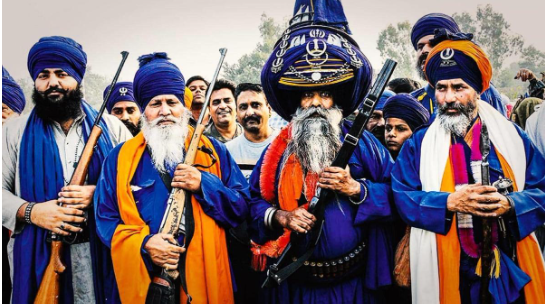
Nihang Sikhs: Guardians of Sikh Tradition
- Historical Roots
- Originally known as Akalis or Akali Nihangs, Nihangs are a distinctive warrior order within the Sikh community.
- Their history dates back to the times of Guru Gobind Singh, the 10th Sikh Guru.
- Distinctive Attire
- Easily recognizable by their unique blue attire, featuring blue robes and high turbans adorned with steel quoits (chakrams).
- Often seen carrying traditional weapons like swords, spears, and daggers.
- Martial Traditions
- Highly skilled in Gatka martial arts.
- Historically served as a dedicated and elite force, safeguarding Sikh shrines and communities.
- Historical Significance
- Played a major role in defending the Sikh Panth during challenging periods, such as after the fall of the first Sikh rule and the onslaught of Afghan invader Ahmed Shah Durrani.
- Current Status
- Divided into several groups, each with its own "chhaoni" (cantonment).
- Loosely organized into two "dals" (forces): Buddha Dal and Taruna Dal.
- Buddha Dal headquartered at Talvandi Sabo, Bathinda district, while Taruna Dal's principal cantonment is at Baba Bakala in Amritsar district.
- Centers of Gathering
- Anandpur Sahib, the birthplace of the Khalsa, remains a central location for Nihang gatherings.
- Hola Mahalla, a Sikh festival introduced by Guru Gobind Singh, is celebrated annually in March, drawing thousands of Nihangs.
- During this festival, they showcase their military skills, including engaging in mock battles.
Source:News18
Temper the Jubilations: Recent Supreme Court Verdicts
In News: The Supreme Court's recent rulings, deeming the electoral bonds scheme unconstitutional and upholding AAP's victory in the Chandigarh mayoral race, are celebrated as positive strides for electoral democracy.
Evaluating the Supreme Court's Balancing Act
Analysis of Judicial Responsibility
- The Supreme Court of India, as the apex judicial body, holds the crucial role of interpreting and preserving the constitution.
- It engages in a delicate balancing act, navigating complex executive decisions while safeguarding its own legitimacy within the constitutional framework.
Importance of Legitimacy
- Maintaining equilibrium is vital to prevent the antagonization of the executive, preserving the Court's legitimacy.
- The Court acknowledges that a collapse in legitimacy could undermine the foundations of the constitutional order it seeks to protect.
Challenges in Balancing Against the Executive
- Dual Role Dilemma
- The Court juggles its dual role as a legal arbiter and guardian of constitutional values.
- Balancing act becomes intricate when faced with executive actions challenging constitutional principles.
- Limitations - Facade of Constitutionalism
- The Court's caution in confronting the executive should not overshadow its commitment to upholding constitutional values.
- Concerns arise when the Court leans more towards preserving a facade of constitutionalism over assertiveness.
- Upholding Principles Amidst Executive Power
- Recent decisions, while positive, prompt questions about the Court's consistent commitment to challenging executive power.
- The delicate equilibrium must not compromise robust defense of constitutional principles.
- Political Culture, Public Sentiments, and the Court's Role
- Divergence of Legal Decisions and Public Sentiment
- Despite legal decisions challenging government initiatives, there's a disconnection between legal pronouncements and public sentiment.
- Normalisation of Institutional Degradation
- Lack of public outrage suggests a troubling acceptance of institutional degradation.
- Aestheticization of Politics
- Political events are viewed as entertainment rather than significant indicators of institutional trustworthiness.
- Divergence of Legal Decisions and Public Sentiment
Courts' Role in Shaping Political Culture
- The Court operates within a socio-political environment where the gravity of issues may be overshadowed by a superficial engagement with political developments.
- The Court's impact on shaping political culture is constrained by the broader context of institutional degradation.
Way Forward
- Urgent need for civic courage, critical thinking, and holding the government accountable.
- Critical examination of institutional roles in maintaining genuine accountability is imperative.
Conclusion
- Recent Supreme Court decisions should be cautiously viewed within the larger context of institutional degradation.
- Challenges in balancing legitimacy, fragmented opposition, and the normalisation of institutional degradation must be addressed.
- Public reception and the Court's unwavering commitment to constitutional values will determine the true impact of these decisions on Indian democracy.
Source: IE
Revitalizing Healthcare in West Sikkim: A Holistic Approach for Enhanced Well-being - Case Study of the Day
West Sikkim has revamped its health centers in alignment with National Health Mission guidelines, creating clean and accessible spaces.
- Aesthetic enhancements, informative materials, and vibrant colors facilitate easy identification.
- The Medical Officer ensures free lab services and consistent medication supply.
- Nutrition gardens promote awareness of medicinal plants, involving the youth.
- Active community and administrative engagement uplift health indicators in the district.


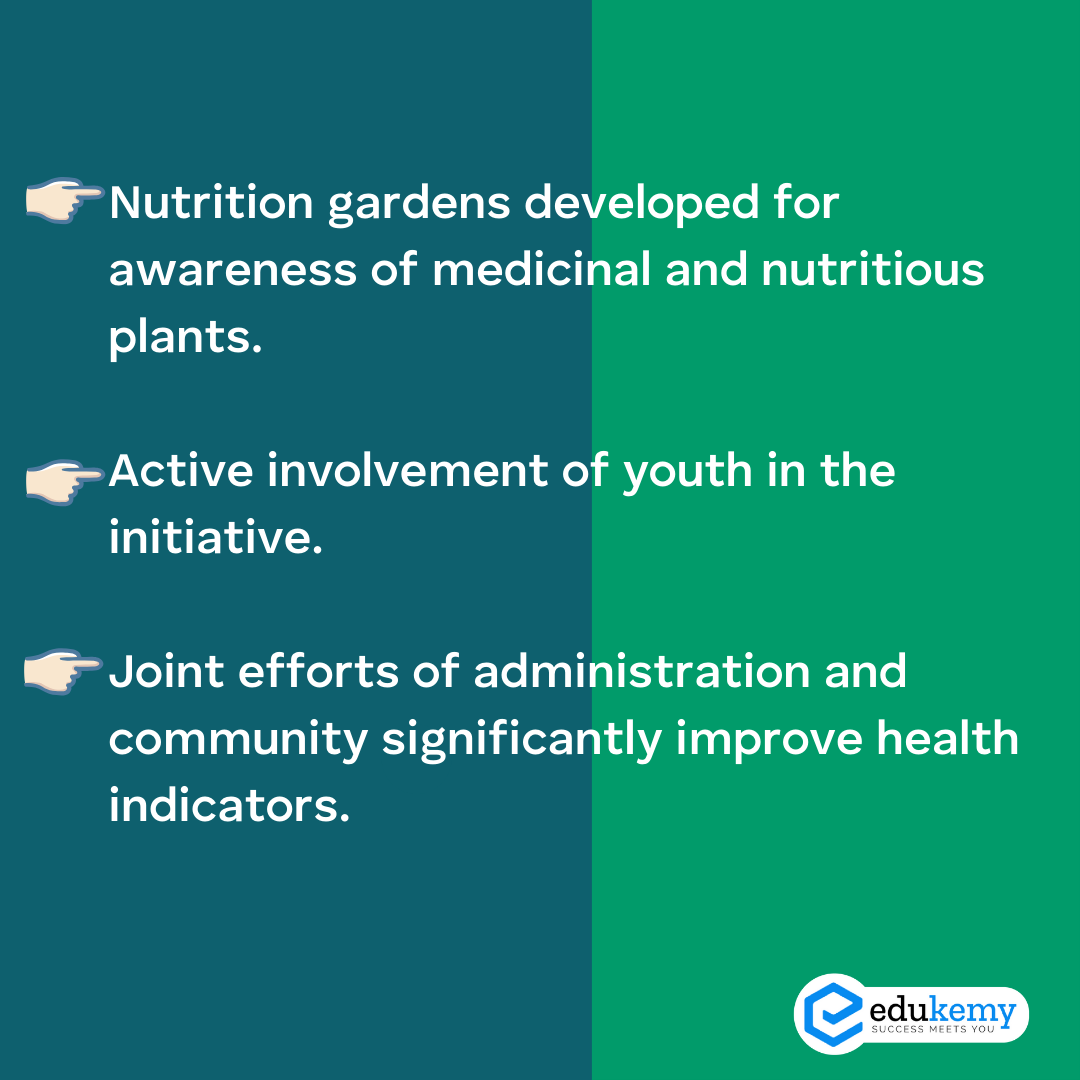
Share the article
Edukemy’s Current Affairs Quiz is published with multiple choice questions for UPSC exams
MCQ
Get Latest Updates on Offers, Event dates, and free Mentorship sessions.

Get in touch with our Expert Academic Counsellors 👋
Frequently Asked Questions
UPSC Daily Current Affairs focuses on learning current events on a daily basis. An aspirant needs to study regular and updated information about current events, news, and relevant topics that are important for UPSC aspirants. It covers national and international affairs, government policies, socio-economic issues, science and technology advancements, and more.
UPSC Daily Current Affairs provides aspirants with a concise and comprehensive overview of the latest happenings and developments across various fields. It helps aspirants stay updated with current affairs and provides them with valuable insights and analysis, which are essential for answering questions in the UPSC examinations. It enhances their knowledge, analytical skills, and ability to connect current affairs with the UPSC syllabus.
UPSC Daily Current Affairs covers a wide range of topics, including politics, economics, science and technology, environment, social issues, governance, international relations, and more. It offers news summaries, in-depth analyses, editorials, opinion pieces, and relevant study materials. It also provides practice questions and quizzes to help aspirants test their understanding of current affairs.
Edukemy's UPSC Daily Current Affairs can be accessed through:
- UPSC Daily Current Affairs can be accessed through Current Affairs tab at the top of the Main Page of Edukemy.
- Edukemy Mobile app: The Daily Current Affairs can also be access through Edukemy Mobile App.
- Social media: Follow Edukemy’s official social media accounts or pages that provide UPSC Daily Current Affairs updates, including Facebook, Twitter, or Telegram channels.





